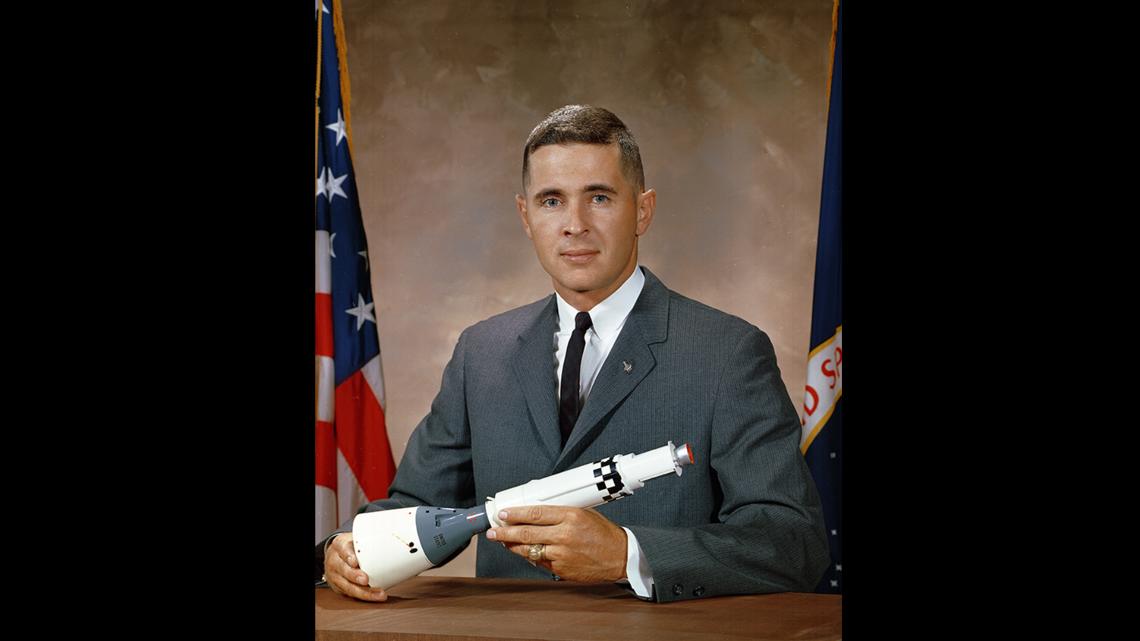ANACORTES, Wash. — Flying took William “Bill” Anders to new heights during his decades-long career as a NASA astronaut and accomplished pilot. He was one of the first people to reach the moon and gave the world its most iconic view of Earth.
Anders, 90, died in a plane crash in Washington’s San Juan Islands on Friday. His son, Greg Anders, confirmed to KING 5 that his father's body was recovered during search efforts after a T-34 airplane crashed off the coast of Jones Island. He was the sole occupant of the plane.
Born in Hong Kong, China, in October 1933 to a U.S. Navy lieutenant, Anders and his parents later settled in La Mesa, California, according to the Heritage Flight Museum. Anders attended the United States Naval Academy and was commissioned into the U.S. Air Force in 1956.
Thousands of people applied to NASA to participate in space missions and Anders was selected initially in 1963 as a backup crew for the Gemini 11 mission, according to the Heritage Flight Museum, which Bill and his wife Valerie Anders formed in 1996.


He learned to fly helicopters in his spare time and logged thousands of flight hours in his lifetime.
He earned a spot on the Apollo 8 space mission as the youngest member, alongside Frank Borman and Jim Lovell.
Bill Nelson, NASA administrator, said on June 7 that during the mission, Anders “offered to humanity among the deepest of gifts an astronaut can give.”
“He traveled to the threshold of the Moon and helped all of us see something else: ourselves. He embodied the lessons and the purpose of exploration,” Nelson said. “We will miss him.”
In December 1968, the three-man crew launched into space, becoming the first people to reach the moon.
The mission “marked the first manned flight of the Saturn V, the first time that humans had left Earth’s gravity, the first humans to travel to the moon and fall under the gravitational pull of a celestial body other than Earth, and the first humans to see the Earth rise over the horizon of another celestial body,” according to the Heritage Flight Museum.
The Apollo 8 crew read verses from the book of Genesis during a live broadcast from the moon. Anders is also credited with taking the iconic “Earthrise” photo, one of the most famous photos of Earth and an image that started an environmental awareness movement.
Anders previously told KING 5 in 2022 that he never planned to take a picture of the Earth.
“On our third orbit around the moon, I looked out the window and thought, man! That’s really something,” said Anders. “So, I took out the camera.”
Anders said he believed it has a special place in history.
“It showed how fragile the Earth was, how small the Earth was, and it basically kickstarted the environmental movement," Anders said. "We'd come all the way to the moon to study the moon and we discovered the Earth.”
Back on Earth, Anders earned several leadership roles, such as executive secretary of the National Aeronautics and Space Council, and was appointed by President Ford as first chairman of the Nuclear Regulatory Commission, according to the museum.
As a Major General, Anders retired from the Air Force Reserves in 1988, over three decades after he first joined.
Bill and his wife Valerie moved to Orcas Island in Washington in 1993, later residing in Anacortes. The couple started the Heritage Flight Museum three years after, located at the Skagit Regional Airport in Burlington.
The Anders had six children together and two of their sons, including Greg Anders, now operate the museum.
"The family is devastated. He was a great pilot. He will be missed," the family said in a statement.

